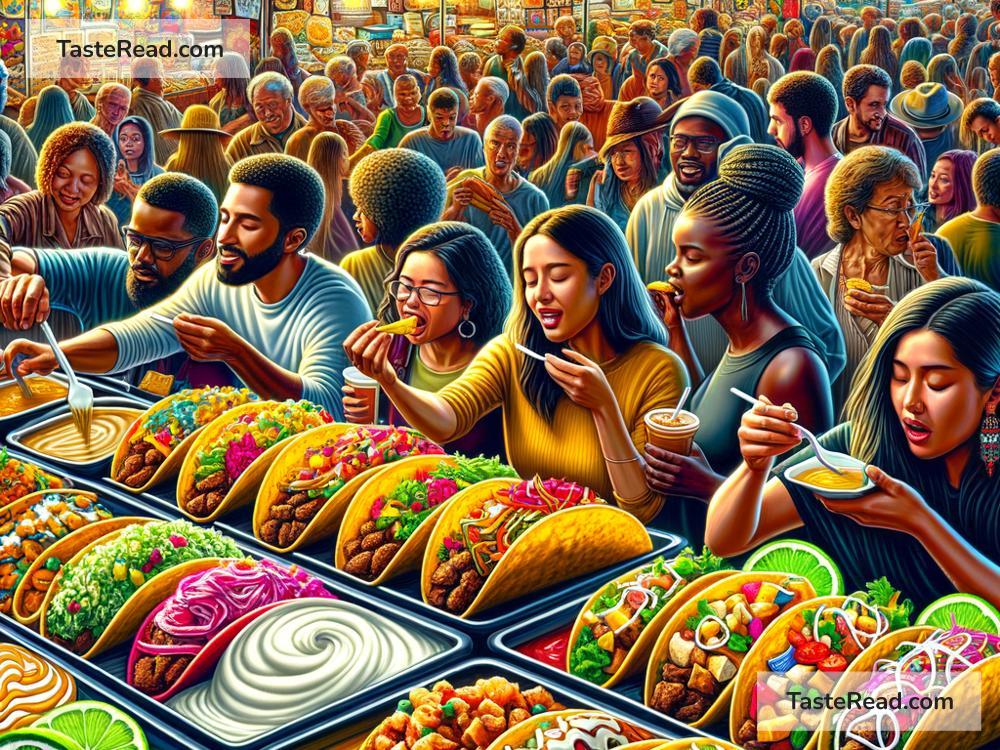Exploring the Global Popularity of Street-Style Tacos for Lunch
In many corners of the world, lunchtime brings a universal question: “What are we eating today?” Among the myriad choices, one dish has risen to global fame, winning hearts (and stomachs) far beyond its Mexican origins: the street-style taco. Small, delicious, and bursting with flavor, street-style tacos have become a lunchtime favorite for people everywhere, from bustling city centers to quiet suburban streets. But what’s behind this global love affair with tacos, and how have they adapted to different tastes and cultures? Let’s dive in.
First off, tacos are the epitome of simplicity and elegance in food form. Traditionally, a street-style taco is nothing more than a small, soft corn tortilla filled with meat – usually beef, chicken, or pork. It’s then adorned with a variety of fresh toppings like onions, cilantro, and a squeeze of lime juice. It’s this simplicity that makes tacos so versatile and beloved. They offer a rich tapestry of flavors in each bite, with the acid from the lime cutting through the fat of the meat, and the fresh toppings offering a crisp contrast to the soft tortilla.
But the global journey of the taco has seen it transform in delightful ways, adapting to local tastes while retaining its soul. In places like the United States, for instance, the taco has taken on new forms, such as the hard-shell version, which swaps the soft tortilla for a crispy counterpart. Elsewhere, innovative fillings like fish, shrimp, and even plant-based alternatives cater to local palates and dietary preferences, proving that the essence of a taco is not in its specific ingredients but in its spirit of simple, vibrant flavors.
The street-style taco’s adaptability is one secret to its international success. Chefs and home cooks alike have embraced tacos as a canvas for culinary creativity, incorporating local ingredients and flavors. In Korea, for example, tacos come filled with bulgogi (marinated beef) and kimchi, creating a marvelous fusion of Mexican and Korean cuisines. These global iterations not only respect the dish’s origins but also celebrate the diversity of tastes and ingredients found around the world.
Another factor in its popularity is how tacos fit into the fast-paced lifestyle of modern society. They are the ultimate fast food: easy to make, even easier to eat, and infinitely customizable. Tacos don’t require silverware, making them the perfect on-the-go meal for lunch breaks. Whether from a street vendor, a food truck, or a fast-casual restaurant, tacos can be enjoyed just as much in a bustling marketplace as in a quiet park or office break room.
The social aspect of eating tacos cannot be understated. In many cultures, meals are a communal affair, and tacos – typically served in orders of three or more – are ideal for sharing. They encourage conversation and interaction, making lunchtime not just a break for nourishment but an opportunity for connection. The rise of taco Tuesday gatherings in many parts of the world underscores tacos as a catalyst for social interaction, further cementing their place in global food culture.
We also cannot ignore the role of social media in the taco’s ascent. Eye-catching photos of colorful taco spreads grace the feeds of Instagram and Pinterest, sparking culinary curiosity and wanderlust. Food bloggers and influencers travel the world, showcasing local taco variations and celebrating the universal joy they bring. This global tapestry of taco love shared online has undoubtedly played a role in their widespread appeal.
In conclusion, the global popularity of street-style tacos for lunch reflects a collective appreciation for food that is simple, flavorful, and adaptable. Tacos bridge cultures, bringing people together through a shared love of good food. They are a reminder that the best dishes don’t require complex recipes or exotic ingredients, but a balance of flavors, textures, and, most importantly, the joy of eating. Whether you’re enjoying a traditional taco in the heart of Mexico or savoring a local adaptation thousands of miles away, one thing is clear: tacos are a universal language of deliciousness, spoken and understood everywhere. So next time lunchtime rolls around, you might just find yourself asking, “Why not tacos?”


